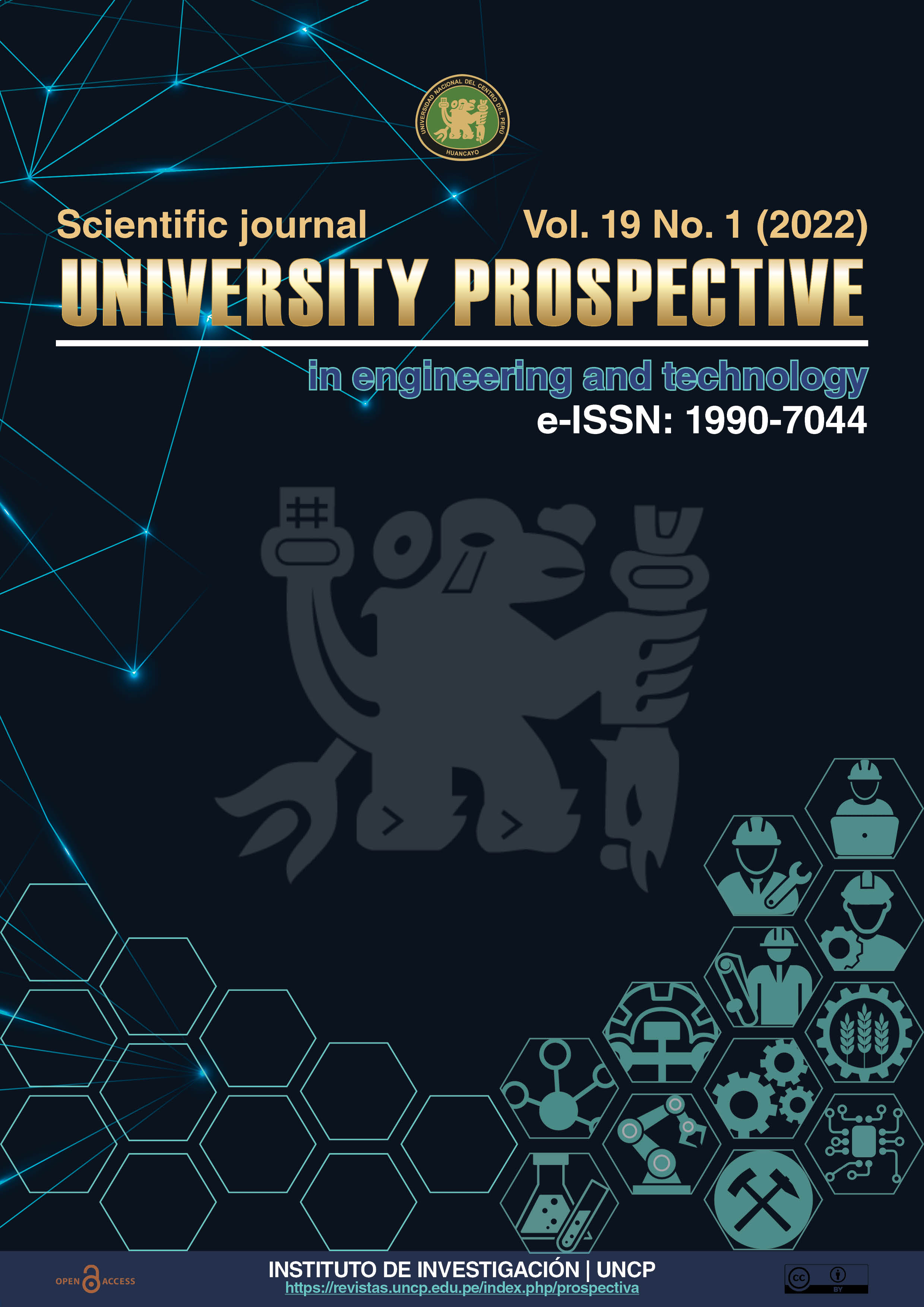Analysis of photovoltaic panels in real operating environments to determine their efficiency
DOI:
https://doi.org/10.26490/uncp.prospectivauniversitaria.2022.19.1956Keywords:
Concrete, Admixture, Sugar, Workability, Settingtime, ConstructionAbstract
Reliable knowledge about the performance of different PV generators (such as individual cells, modules, arrays, etc.) under real operating conditions is essential for proper product selection and accurate prediction of their electricity production. The method of Durisch et al. (2007) has been used for the calculation of the annual performance of photovoltaic (PV) modules at selected locations using site-specific meteorological data. Knowing the performance of PV modules is essential to determine the required amount of electricity generation for these modules, which enables the selection of the module type taking into account the highest performance-cost nexus for a given PV installation site. The three independent variables of cell temperature, solar irradiance and relative air mass are taken into account in the developed efficiency model that is used to calculate the performance of the photovoltaic modules. The current/voltage (I/V) characteristics of the selected module are the basis for obtaining the open parameters of the model, which are measured outdoors in test installations in real operating situations. Using the model, the cell and module efficiencies can be determined in all relevant operating situations. Performance calculations are presented for five commercial modules (LA361K54S from Kyocera, BP 585 F from BP Solar, UPMUS-30 from Uni-Solar, CIS ST40 from Siemens and WS11003 from Wuerth) for a location (Al Qawairah) of good irradiance in Jordan where reliable meteorological data were measured and available. These represent polycrystalline, monocrystalline and amorphous silicon PV modules as well as copper indium diselenide, CuInSe2 PV modules. The results of the annual performance of these modules are presented.
Downloads
References
Durisch, W., Bitnar, B., Mayor, J.-C., Kiess, H., Lam, K.-h., & Close, J. (2007). Efficiency Model for
Photovoltaic Modules and Demonstration of Its Application to Energy Yield Estimation. Solar
Energy Materials and Solar Cells, 91(1), 79-84. https://doi.org/10.1016/j.solmat.2006.05.011
Durisch, W., Tille, D., Wörz, A., & Plapp, W. (2000). Characterisation of Photovoltaic Generators.
Applied Energy, 65(1), 273-284. https://doi.org/10.1016/S0306-2619(99)00115-4
Downloads
Published
Issue
Section
License
Copyright (c) 2024 Prospectiva Universitaria

This work is licensed under a Creative Commons Attribution-NonCommercial-ShareAlike 4.0 International License.
Esta Revista es de acceso abierto a su contenido a través del Internet, poniendo a disposición de la comunidad científica los resultados de la investigación, de manera gratuita, para el intercambio del conocimiento desarrollado.
El contenidos de la Revista se distribuyen bajo la licencia Creative Commons Reconocimiento-NoComercial-CompartirIgual 4.0 Internacional.
![IconJournalPU [ENG] by Edgar Julian-Laime®](https://revistas.uncp.edu.pe/public/journals/1/pageHeaderLogoImage_en.png)









